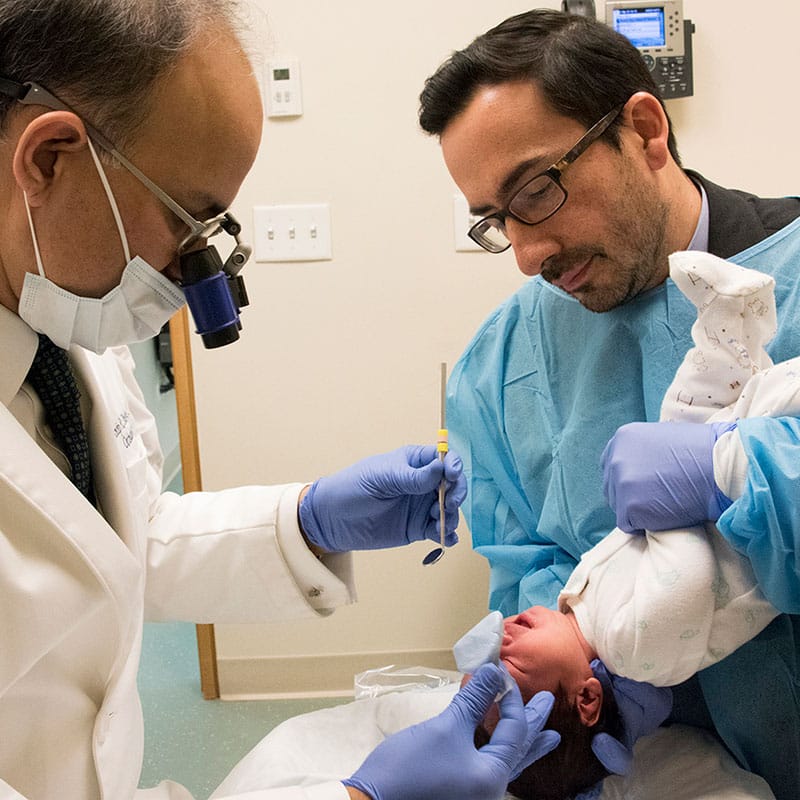Signs & Symptoms of Crouzon Syndrome
Premature fusion of cranial sutures (or “joints” between the various bones of the skull) during the first year of life leads to restricted growth and development of the skull, face, brain, and central nervous system. Thus, the clinical features become increasingly apparent during the first 1-2 years of life and can progress until age three. However, there can still be variability in the presentation, as some patients may show prominent signs at birth, while others may not manifest any changes until early childhood. Some people with Crouzon syndrome may have very mild facial changes, while others are more severe.
The most common features associated with Crouzon syndrome are:
- Tall, flattened forehead
- Wide-set eyes (hypertelorism) which may appear as bulging or protruding (proptosis)
- Beak-shaped nose
- Underdeveloped upper jaw with a sunken facial appearance (maxillary or midface hypoplasia)
- Protrusion of the lower jaw (mandibular prognathism)
- Enlarged and/or low set ears
- Unusually-shaped head. Some of the head shapes associated with Crouzon syndrome may include:
– Brachycephaly: a shortened and widened skull due to premature fusion of the coronal sutures
– Scaphocephaly: an elongated and narrowed skull due to premature fusion of the sagittal suture
– Trigonocephaly: a triangular shaped skull due to premature fusion of the metopic suture
Patients with Crouzon syndrome may also have:
- Cleft lip and/or palate (although this is rare)
- Dental problems including a highly arched and narrowed palate with crowded teeth and malocclusion, in which the upper and lower teeth do not meet when biting
- Conductive hearing loss
- Breathing problems due to abnormalities of the face and upper airway
Neurodevelopmental Impact of Crouzon Syndrome
Increased intracranial pressure can create many problems for people with Crouzon syndrome. Craniosynostosis itself increases pressure inside the skull due to decreased overall head volume. Also, about 30% of people with Crouzon syndrome will develop hydrocephalus, which is an abnormal accumulation of cerebrospinal fluid (CSF) in the brain due to impaired flow and absorption of the fluid within the brain’s cavities and spinal canal. Hydrocephalus can then lead to further increased intracranial pressure, resulting in signs and symptoms such as nausea, vomiting, headaches, visual impairment, loss of muscle tone and strength, and seizures. Though most patients with Crouzon syndrome have normal intelligence, increased intracranial pressure can lead to intellectual disabilities if left untreated.








